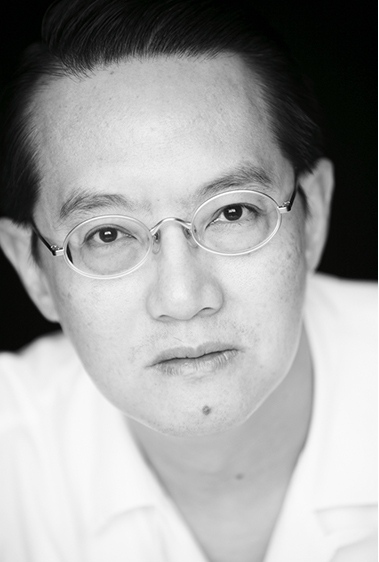Any way you cut it,
Facelift surgery is no picnic

In nearly every case, patients are required to undergo general anaesthesia. Extensive procedures, such as the deep plane lift, call for incisions that slice perilously close to delicate facial nerves. And all facelift surgeries – even the so-called “mini-lift” – require weeks to months of recovery time before patients enjoy a newly rejuvenated face.
But soon, patients around the world may be able to avail themselves of an alternative – one that all but eliminates these dreaded side effects of the conventional facelift. Named after its creator, Dr. Woffles Wu, the Woffles Lift is catching the attention of cosmetic surgeons worldwide. What this newcomer technique offers is the same rejuvenated result, but without the surgery.
“Basically, the Woffles thread Lift treatment in Singapore is a wholly unique technique,” says the Singapore-based cosmetic surgeon. “I think it holds great, great promise for the field.”
How it Works?
A few years ago, the prospect of a non-surgical facelift in Singapore may have sounded as likely as that of a non-surgical triple bypass. After all, how would it be possible to effect a lasting change on the underlying tissues of the face without first cutting through the exterior layers of skin?
Last year, Dr. Wu answered this question by developing a technique that incorporates the use of a special thread, inserted into the underlying tissues of the face using a long, fine needle.
“I actually call it an injection of a thread,” Dr. Wu says. “This specially designed thread is inserted through the soft tissues of the face, suspending them and attaching them to the hard tissues of the scalp. The thread is permanent; it stays in the face.”
What makes the thread special are hundreds of tiny barbs, etched by a laser, that fasten the thread to the tissues it penetrates.
“Essentially, it’s like the leg of a fly,” explains Dr. Wu. “If you look at a fly’s leg under a microscope, you will see hundreds of tiny barbs. Those barbs are like Velcro – they stick to surfaces. The thread used in the Woffles Lift is similar, as it sticks to the soft tissues of the face.”
Dr. Wu says the threads are normally injected near the sideburn and temple on each side of the patient’s face. The threads are pulled out near the scalp.
“You can use two threads, four threads, six threads or eight threads, depending on how much of a pull you want and where you want that pull,” Dr. Wu says. “I generally use three threads per side – one under each sideburn, one in front of each sideburn, and one up over each temple.”
Then, with all the skill and precision of a marionette puppeteer, Dr. Wu manipulates the strings to pull up sagging tissues and tighten loose jowls.
“You know how sometimes we go to the mirror and hold our faces back at the temples with our fingers to see how we’d look with a facelift, and we often end up thinking, ‘wow, that looks much better.’ In the Woffles Lift, the threads take the place of your fingers.”
The threads also take the place of the permanent sutures generally used to tighten the supporting tissues of the face. The Woffles thread lift Singapore treatment eliminates the need for stitches in the skin as well – the fine needle leaves no permanent marks on the face, as the invasiveness of the technique is limited to a few pinhole-sized entry points. And Dr. Wu says general anaesthesia is not required for the procedure.
“It uses only a little local anaesthetic at the sides of the face, and you get a very dramatic pull,” he says.
ALL OF THE PULL, NONE OF THE PAIN
Dr. Wu says patients often find there are many advantages to opting for the Woffles Lift over a conventional procedure. But he says the most compelling reasons to choose this new technique have to do with the huge reduction in pain and recovery time.
“With a conventional facelift, you have four to six weeks of recovery time, during which you’ll experience significant bruising and swelling, and the result will not be nice for the first couple of months,” Dr. Wu says. “With the Woffles Lift, the patients are able to get back to work in only three days, which is really just fantastic.”
And it’s not just about time. Following a Woffles Face Lift procedure in Singapore, patients generally experience only slight bruising at the needle’s points of entry, pain that can usually be controlled with over-the-counter analgesics. Compare this to the immediate results of the traditional facelift, which often include swelling, puffiness, and thickening and itching of the scars. In some cases, the formation of keloids around the incision areas can occur, and in the most extreme examples of post-facelift morbidity, patients have even ended up with sensory or motor nerve damage from poorly performed facelifts.
“With the Woffles Lift, because we use the Woffles Thread, none of these complications are ever encountered,” Dr. Wu says.
Another advantage the procedure holds over its predecessor is the dramatic reduction in operation time. While a traditional facelift normally takes about five hours to complete, patients who opt for the Woffles Lift walk out of the clinic in half an hour to 45 minutes.
ANYONE NEED A LIFT
Dr. Wu says that in its first year, the Woffles lift has been used to rejuvenate the faces of about 50 patients.
“We’re really thrilled with the results, and the patients are so happy,” he says. However, he adds that the Woffles Lift is not for everyone.
“Obviously, some patients have so much loose skin that after pulling there will be all of that excess left,” he says. “For these people, it’s more appropriate to perform a traditional facelift.
Ideally, Dr. Wu says, the Woffles Lift is for people in their mid 30s to late 50s who are beginning to see the first signs of aging and sagging of supporting tissues. He notes, though, that the technique has been used successfully in patients in their 70s.
“Basically, this technique is for those people who want some rejuvenation but just feel that it isn’t time for a full facelift yet.”
Dr. Wu says the Woffles Lift offers dramatic rejuvenation for most patients, in some cases allowing patients to look up to 15 years younger. However, he says the effects of the Woffles lift last about five years, after which patients will have to go in for another procedure to regain their rejuvenated look. By comparison, conventional facelift procedures boast a seven-year effective duration.
But considering the side effects of the conventional facelift, this is a trade-off that many patients may be willing to make.
“There is no permanence in cosmetic surgery,” Dr. Wu says. “The only things that are permanent are the complications. So I strive to use and develop techniques with as few complications as possible.”
THE PRICE OF REJUVENATION
Dr. Wu says the cost of the Woffles lift tends to be somewhat less than that of a traditional facelift.
Dr. Wu says that a major expense associated with the Woffles Lift technique is the cost of the threads. Aside from being difficult to manufacture and the laser technology needed to create the precisely cut barbs, there is only one manufacturer of the threads in the world thus far.
“So if you did it with a lot of threads it could possibly be the same price,” he says. “But it’s still without the dangers, without the complications, and without the down time that is generally associated with a conventional facelift.”
Plus, he adds, since the technique eliminates the need for a stay in the hospital, the facility costs also tend to be low.
THE NEW GENERATION: NON-INVASIVE TECHNIQUES
The Woffles Lift is just one example of the many minimally invasive techniques that are taking the clinical beauty industry by storm. And Dr. Wu says there will no doubt be more to follow.
“I think that cosmetic surgery has already taken that turn,” Dr. Wu notes. “Everywhere I go and every conference I attend, there’s always a little segment devoted to non-surgical facelift procedures.
“Believe it or not, there was a time that if a surgeon didn’t do a lot of cutting, it wasn’t considered ‘macho,’ because in a way that was what a surgeon was supposed to do.”
Dr. Wu says that the drive for minimally invasive techniques is, in large part, driven by patient demand. Whereas decades ago the mark of success for a facelift would have been measured in how many square inches of skin the surgeon could remove, today a successful procedure is characterized by a quick recovery and a natural, fresh look.
“So what we’re seeing now is that patients around the world are dictating what they want, and therefore what we need to do,” Dr. Wu says. “They want to look as good as they can, but with as little pain and effort as possible.”
Dr. Wu says that this demand has resulted in the creation or further development of a range of other non-surgical facial treatments – treatments such as Botox, fillers and photorejuventation.
But for now, he says he’s focused on telling more surgeons around the world about the Woffles Lift technique – and how to offer rejuvenation with the tug of a string.
“I’m really, really enthusiastic about this technique,” he says


